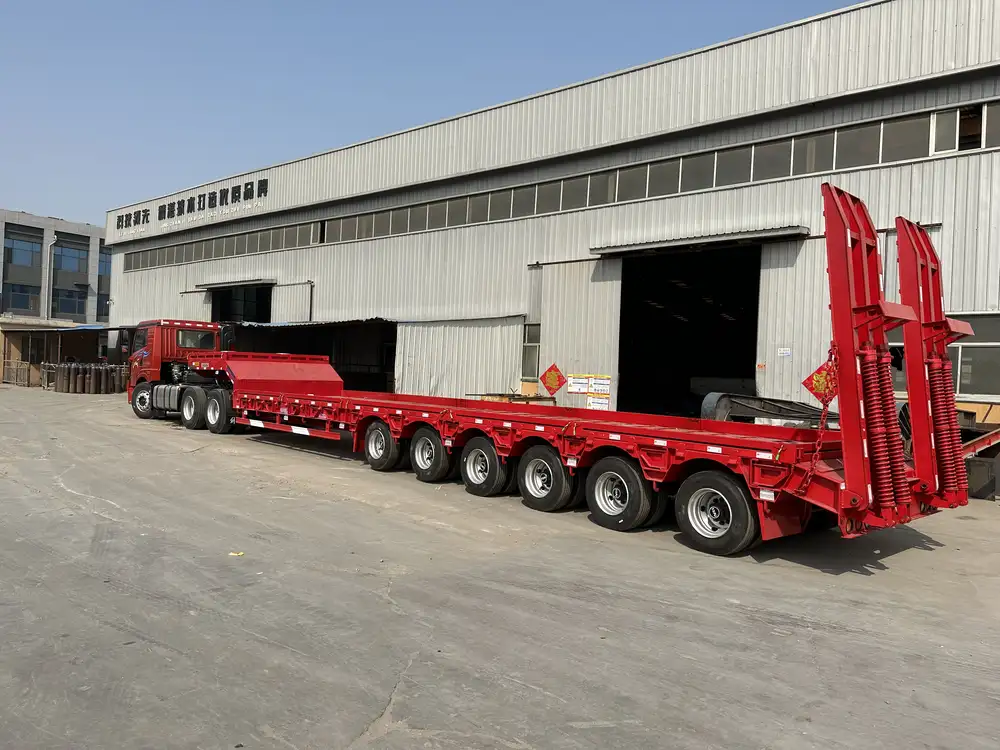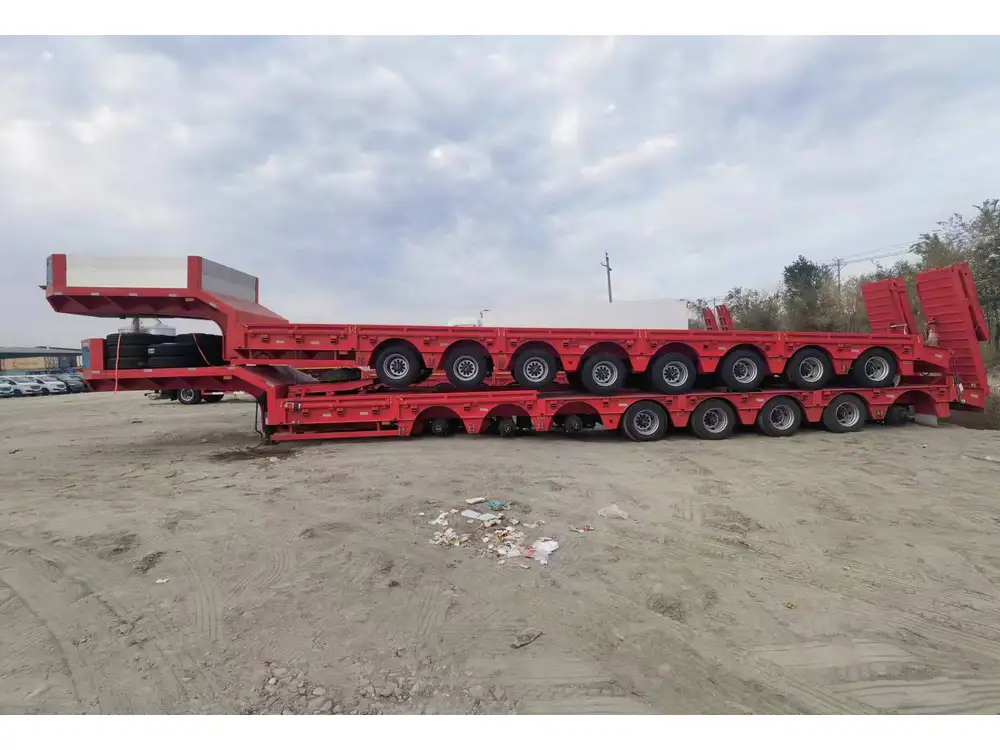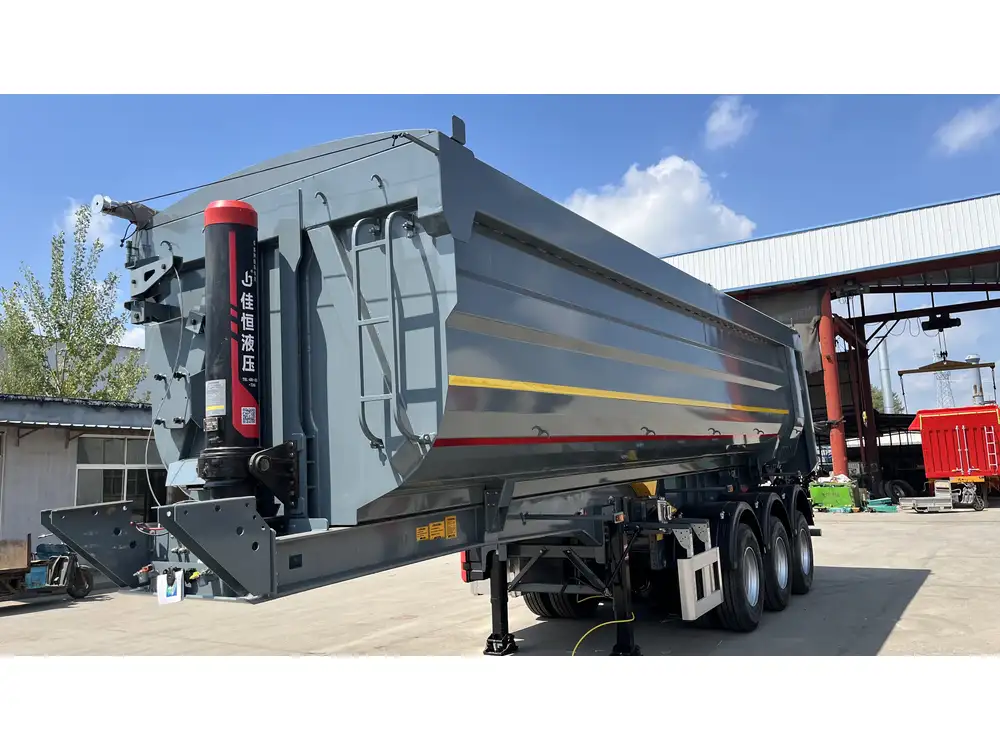When it comes to transporting goods, semi-trailers, especially flatbed trailers, play a critical role within the logistics and transportation industry. As we delve into understanding the weight of a 45-foot flatbed trailer, we will explore various dimensions like construction materials, maximum payload capacities, and regulatory considerations that affect operational efficiency.
What is the Average Weight of a 45-Foot Flatbed Trailer?
The weight of a 45-foot flatbed trailer typically ranges anywhere from 12,000 to 15,000 pounds (5,443 to 6,804 kg). However, various factors can affect this weight. Considering the following aspects can provide a detailed understanding of how this figure can change:
| Type of Material | Approximate Weight |
|---|---|
| Steel | 13,000 lbs |
| Aluminum | 10,000 lbs |
| Composite Materials | 11,000 lbs |
Factors Influencing the Weight of a Flatbed Trailer
Construction Material
- Flatbed trailers are primarily constructed using materials like steel or aluminum. Steel trailers are typically heavier due to the density and strength of the metal, ideal for rugged applications. Alternatively, aluminum trailers, while lighter, offer increased resistance to rust and corrosion, making them suitable for various environments.
Design Features
- Many modern flatbed trailers come equipped with additional design features. These may include side rails, toolboxes, or integrated winches, which all contribute to the overall weight. Design is paramount; the intricacy and complexity of the trailer’s structure can add considerable weight.
Load Configuration
- The distribution of weight can vary depending on what the trailer is configured to carry. For instance, a trailer designed for heavy machinery may incorporate reinforcements that alter its base weight. Understanding how payload affects the trailer’s overall weight is crucial for compliance and safety on the road.

Payload Capacity: Why It Matters
The payload capacity of a 45-foot flatbed trailer generally ranges from 34,000 to 42,000 pounds (15,422 to 19,051 kg), but this can vary based on axle configurations, tire ratings, and the specific construction of the trailer. Calculating the payload accurately is imperative for safe transportation, adhering to legal weight limits, and ensuring the longevity of the trailer.
Key Considerations for Calculating Payload
Gross Vehicle Weight Rating (GVWR) The GVWR is the maximum operating weight of a vehicle, which includes the weight of the trailer plus its payload. Understanding this value is essential to prevent overloading.
Axle Configuration More axles typically mean a greater potential for increased payload capacity. A typical 45-foot flatbed may feature either single or tandem axles, with the latter providing better weight distribution.
State and Federal Regulations Different states may have varying regulations that define maximum allowable weight limits, both for individual axles and gross weights. Staying compliant with these regulations is essential for ensuring safe and lawful transportation.
Comparisons of Payload Capacities
| Trailer Type | Average Payload Capacity |
|---|---|
| Standard 45-Foot Flatbed | 34,000 – 42,000 lbs |
| Double Drop Flatbed | 38,000 – 44,000 lbs |
| Step Deck Flatbed | 35,000 – 40,000 lbs |
| Extendable Flatbed | Varies greatly, often up to 60,000 lbs |

Weight Distribution: Compliance and Safety
Efficient weight distribution across the trailer plays a pivotal role in operational safety and compliance with transport regulations. Imbalanced loads can lead to instability during transit, increasing the risk of accidents on the road.
Importance of Proper Weight Distribution
Safety Standards
- Adhering to guidelines for weight distribution helps prevent accidents stemming from trailer sway or rollovers. Properly situated loads allow for better acceleration, braking, and maneuverability.
Enhanced Fuel Efficiency
- A well-distributed trailer typically experiences less drag and resistance while traveling, leading to improved fuel efficiency and lower operational costs.
Wear and Tear on Equipment
- Overweight or improperly loaded trailers can suffer from premature wear, leading to costly repairs. Regular inspections and proper loading practices can mitigate this risk.
Regulatory Requirements: Know Before You Go
Understanding the legal framework surrounding the operation of flatbed trailers is vital to avoid hefty fines and ensure smooth transportation. The Federal Motor Carrier Safety Administration (FMCSA) outlines the following mandates regarding trailer weight:
- Maximum axle weight limits are typically set at 20,000 lbs per axle for a standard semi-trailer.
- Bridge Law, which involves axle spacing and weight distribution over multiple axles, must be comprehended to comply with local weight regulations.
- Permits may be necessary for loads exceeding state and federal weight limits.

Compliance Tips
Regularly Monitor Weight Loads Weighing your load before departure can prevent any last-minute surprises. Using portable scales can enhance convenience and support compliance.
Utilize Technology Modern trailers often come equipped with load monitoring systems that provide data on axle weights and overall distribution in real-time. These can significantly aid in maintaining compliance.
What You Should Know About Customizations
The customization of flatbed trailers, particularly those with a 45-foot frame, can greatly influence both weight and utility. Customizations range from specialized decking materials to reinforced structures for transporting specific goods, such as machinery or oversized equipment.
Potential Customization Considerations
Deck Materials Options like treated plywood or aluminum can change both the weight and the usability of the trailer. Lightweight decking materials may reduce overall weight but can impact durability.
Ramps and Tie-Downs Adding features such as ramps or integrated tie-down points can also add weight. Weighing these components against their utility is essential for maximizing efficiency.
Storage Solutions Toolboxes or storage compartments can expand the utility but will inevitably add weight to the flatbed. Optimizing these design elements is integral in crafting a trailer that meets your specific operational needs.

Conclusion: Navigating the Intricacies of Flatbed Trailer Weight
Understanding the weight of a 45-foot flatbed trailer encompasses a myriad of factors, from the trailer’s construction materials to compliance with regulatory mandates. Achieving the optimal balance between payload capacity and trailer safety will not only enhance operational efficiency but can also lead to substantial cost savings.
In the world of transportation, where every pound counts, ensuring that your flatbed trailer is well-constructed, properly loaded, and compliant with state and federal regulations is paramount. Continuous education, investment in quality materials, and prudent handling of payloads are key strategies for manufacturers and operators looking to thrive in a competitive marketplace.
By arming yourself with the right knowledge about weight considerations, customizable options, and regulatory requirements, you can navigate the complexities of operating a 45-foot flatbed trailer with confidence and authority.



